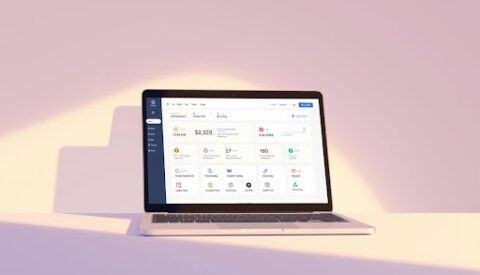Presidential debates are a hallmark of democratic processes, providing a platform for candidates to articulate their policies, challenge opponents, and connect with voters. These events not only influence the trajectory of campaigns but also shape public perception and voter turnout. In this article, we’ll dive deep into the world of presidential debates, exploring their history, format, impact, and the strategies candidates employ to maximize their effectiveness.
The History of Presidential Debates
Early Beginnings
The tradition of presidential debates in the United States can be traced back to the early 19th century, although they didn’t take on the modern format we recognize today. One of the earliest recorded debates occurred in 1858 between Abraham Lincoln and Stephen A. Douglas during their campaign for the U.S. Senate. The debates were more like public speeches, addressing significant issues of the time, such as slavery and governance. This format paved the way for more structured debates in future elections.
By the time of the 1960 election, debates had begun to capture national attention. The first televised debate between John F. Kennedy and Richard Nixon marked a turning point in American politics. It was not just about the words spoken; the visual presentation became equally important. Kennedy’s charismatic television presence contrasted sharply with Nixon’s less polished appearance, which many believe played a pivotal role in influencing public opinion and voter behavior.
Institutionalization of Debates

Following the success of the Kennedy-Nixon debate, the format became a staple in presidential campaigns. In 1960, the Commission on Presidential Debates (CPD) was established to oversee the organization of debates and ensure a level playing field. The CPD aimed to create a nonpartisan environment where candidates could engage in civil discourse about their policies and visions for the country.
Since then, debates have evolved in both structure and significance. The number of debates, the selection of moderators, and the rules governing the exchanges have been adjusted to reflect changing societal norms and media landscapes. Each election cycle brings its own set of challenges and expectations, highlighting the growing importance of debates in the electoral process presidential debate.
Recent Developments
In recent years, debates have become even more critical in shaping electoral outcomes. The rise of social media and 24-hour news cycles has transformed how debates are viewed and discussed. Clips from debates can go viral within minutes, affecting candidates’ reputations and public support almost instantaneously. Additionally, debates are now often accompanied by extensive analysis, fact-checking, and commentary, all of which contribute to the narrative surrounding the candidates presidential debate.
The 2020 election cycle, for instance, showcased how debates could be influenced by global events, such as the COVID-19 pandemic, which necessitated new formats and safety protocols. Virtual debates, audience-less events, and new health guidelines became part of the debate landscape, demonstrating the adaptability of this essential democratic process.
The Format of Presidential Debates
Traditional Formats
Presidential debates typically follow a structured format, allowing candidates to present their views on various topics while responding to questions from moderators and opponents. The traditional formats can include town hall-style debates, where audience members ask questions directly, and moderated debates, where the format is more controlled presidential debate.
Each debate generally consists of several segments, focusing on specific themes or issues, such as the economy, healthcare, foreign policy, and social justice. This segmentation helps ensure that a variety of topics are covered, providing voters with a comprehensive understanding of the candidates’ positions presidential debate.
Innovations in Debate Structure
As the political landscape changes, so too does the structure of debates. Recent innovations have included incorporating technology, such as live polling or social media interactions, to engage viewers more actively. Some debates have also experimented with formats like “fact-checking” segments, where candidates are immediately challenged on their statements, aiming to promote transparency and accountability presidential debate.
Additionally, the use of digital platforms for debates has grown. With the rise of virtual events, candidates can engage with a broader audience beyond the confines of traditional debate settings. This shift reflects the changing dynamics of communication in the digital age, where reaching voters online can be as crucial as in-person interactions.
The Role of Moderators
Moderators play a critical role in presidential debates, guiding the discussion and ensuring that candidates adhere to time limits and rules. A good moderator not only poses challenging questions but also keeps the debate fair and on track. The choice of moderators can significantly impact the tone and outcome of the debate, as their style and approach can either foster a respectful exchange or lead to heated confrontations.
In recent debates, moderators have faced the challenge of navigating partisan divides while maintaining credibility. Their ability to ask tough questions without showing bias is essential for upholding the integrity of the debate process. As the stakes grow higher in each election cycle, the role of the moderator continues to evolve, reflecting broader societal expectations.
The Impact of Presidential Debates
Shaping Public Opinion
Presidential debates are crucial in shaping public opinion. Voters often look to debates as a decisive moment in the electoral process, where they can evaluate candidates side by side. The impressions formed during these debates can sway undecided voters and reinforce or challenge existing beliefs among those with established preferences.
Research has shown that candidates can experience spikes in poll numbers following strong debate performances. Conversely, a poor showing can lead to a decline in support. This phenomenon underscores the high stakes of debate performance, as candidates prepare extensively to ensure they make a favorable impression.
Engaging Voter Participation
Debates also serve as a catalyst for voter engagement. They encourage citizens to tune in, discuss, and reflect on the candidates and their policies. The excitement surrounding debates often translates into increased voter registration and turnout, particularly among young voters who may feel more connected to the political process through these events.
Furthermore, debates provide a platform for addressing pressing issues and concerns that resonate with the electorate. Candidates are often compelled to articulate their positions on critical topics, prompting discussions that can extend beyond the debate stage and into households, classrooms, and workplaces.
The Influence of Media Coverage
Media coverage of presidential debates plays a significant role in shaping their impact. News outlets provide analysis, commentary, and fact-checking that frame how performances are perceived. This coverage can highlight key moments, gaffes, and memorable quotes, contributing to the overall narrative of the debate.
Social media platforms also amplify this effect, allowing viewers to share their opinions and reactions in real-time. Memes, clips, and commentary spread quickly, influencing public sentiment and the overall discourse surrounding the candidates. The interplay between debates and media coverage creates a feedback loop that can enhance or detract from candidates’ messages.
Strategies for Success in Debates
Preparation and Practice
For candidates, preparation is key to a successful debate performance. This process often involves rigorous practice sessions, where they rehearse answers to potential questions, refine their messaging, and simulate the debate environment. Many candidates enlist the help of coaches and advisors to sharpen their delivery and ensure they can effectively communicate their ideas under pressure.
Candidates also conduct research to anticipate their opponents’ arguments and develop counterarguments. This preparation is crucial, as debates often become battlegrounds for policy disputes, requiring candidates to think on their feet and respond effectively.
Presentation and Body Language
Beyond the content of their messages, candidates must pay attention to their presentation and body language. Nonverbal communication plays a significant role in how messages are received. Confidence, eye contact, and appropriate gestures can enhance a candidate’s credibility and relatability.
Candidates often work with image consultants to refine their appearance and demeanor. This attention to detail can make a significant difference in how they are perceived by viewers. A candidate who appears composed and confident is more likely to resonate positively with the audience.
Handling Pressure and Adversity
Debates can be high-pressure situations, with candidates facing intense scrutiny and the potential for unexpected challenges. Effective candidates develop strategies to manage stress and remain composed in the face of adversity. This might include mindfulness techniques, breathing exercises, or rehearsing responses to tough questions.
Furthermore, candidates must be prepared for interruptions, challenges, and unexpected moments that can arise during debates. The ability to remain calm and articulate under pressure can significantly influence how they are perceived by voters.
Notable Presidential Debates in History
The Kennedy-Nixon Debates (1960)
The 1960 debates between John F. Kennedy and Richard Nixon are often cited as a watershed moment in American political history. The first debate, held on September 26, 1960, was the first-ever televised presidential debate. Viewers who watched the debate on television generally believed Kennedy won, while those who listened on the radio favored Nixon. This disparity highlighted the growing importance of television in politics and set the stage for future debates.
Kennedy’s confident demeanor and polished appearance contrasted sharply with Nixon’s visible discomfort and less favorable visual presentation. The debates not only shaped the election outcome but also established the importance of media presence for future candidates.
The Reagan-Carter Debates (1980)
The debates between incumbent President Jimmy Carter and challenger Ronald Reagan in 1980 were pivotal in illustrating the effectiveness of debate performances. Reagan’s charisma and ability to connect with the audience played a significant role in his victory. His famous quip, “There you go again,” aimed at Carter, showcased his wit and ability to disarm opponents while appealing to voters.
This election demonstrated that debates could serve as turning points, influencing voter perceptions and ultimately shaping election outcomes. Reagan’s success in the debates helped solidify his image as a strong leader and communicator.
The Trump-Biden Debates (2020)
The 2020 presidential debates between Donald Trump and Joe Biden were unprecedented in many ways. The debates were marked by intense confrontations, interruptions, and a highly charged political atmosphere. The first debate, in particular, drew criticism for its chaotic nature, prompting calls for reforms in how debates are conducted.
The 2020 debates also highlighted the role of social media in shaping public discourse. Clips and soundbites circulated widely, influencing public perception and voter sentiment in real-time. The election itself was characterized by record turnout,









